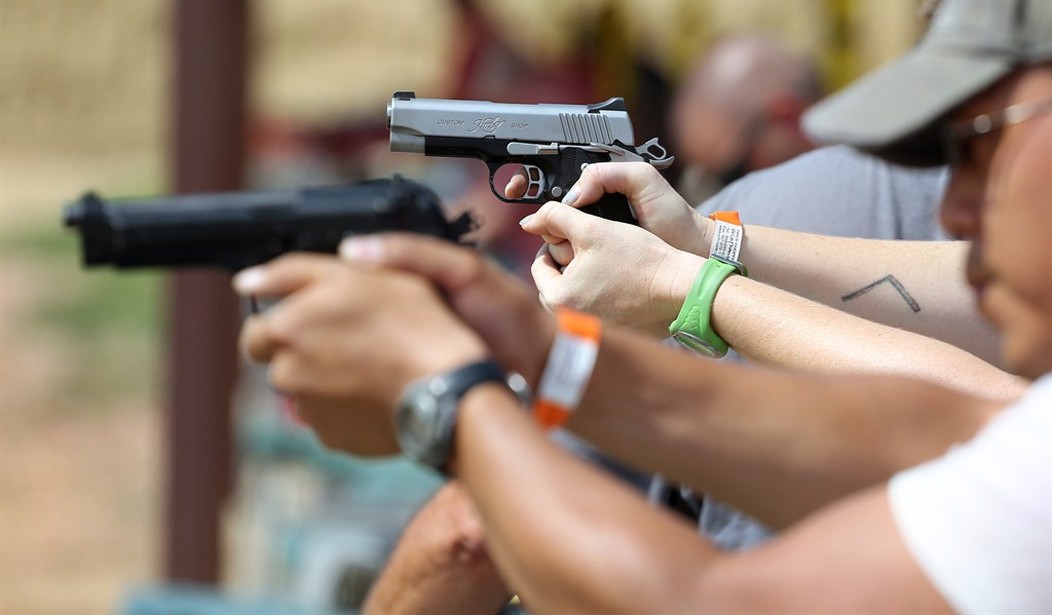When it comes to content on training and the mechanics of shooting activities, a lot goes into that. This is why whenever I talk to students about content – whether it’s written, video, audio, etc. – that whatever they choose comes from trusted and reputable sources. I stumbled upon a great piece called “Un-Predicting the Unpredictable on a Square Range,” by Klint Macro. What pulled me into his piece the most was the frank way he notes there’s just a lot we don’t know when the time comes and the rubber hits the road. Spoiler, there really is no crystal ball, just glimpses based on experience and analysis of data.
Training and practicing are designed to condition us to do predictable things; meaning, the more we do things consistently while training and practicing, the more likely we can predict the things we will do when we need to do them in “real life”… whatever they are. However, this begs the question: What are the “things” that need to be done and when? What can we confidently predict?
Macro goes on to explain that during an attack, we’re not positive about how we’ll react. The physiological and psychological changes that happen within us during an adrenaline dump situation may or may not get us reverting back to how we train.
Luckily we have trainers and experts that take the time to go through scores of data, and more importantly, available video surveillance of deadly encounters. By being presented with real evidence on how people react, we can thus compare it to the ways people train. Macro asks the important question of “how,” concerning different facets of a self-defense encounter. And he gives a great answer.
During an attack, can we predict exactly what our stance will be? Can we predict exactly how we will be attacked if we are attacked? Can we predict exactly how many shots it will take to stop the attack? Can we predict exactly what a prosecutor will do post incident? Can we predict exactly what a jury will think in court?
The honest answer to each question is no! We can no more predict these things than we can predict how many licks it will take to get to the center of a Tootsie Roll Tootsie Pop. The world may never know.
Expert analysis of different encounters has given students of this martial art plenty to work with. While there are no absolutes, a few observations are made by Macro which are worth highlighting – in part.
THE SEMI-PREDICTION OF A LOWERED CENTER OF GRAVITY
We cannot predict what our stance will be during a dynamic critical incident. But we can assume with a slight degree of certainty (based upon mountains of video evidence and observation of living creatures) that we will likely lower our center of gravity and square up to the threat (as much as physical geography permits). However, the specific details of stance are completely dictated by the terrain. Your stance on the carpet in your bedroom will be different if you step on a Lego block in your bare feet. Your stance will be different if you are on clean pavement versus on wet grass with a slight slope.
…
“PREP TWO MAGAZINES: TWO ROUNDS IN ONE MAGAZINE, EIGHT IN THE OTHER.”
If we are left with no other choice but to use our firearm to stop an attack that we didn’t start and we could not get away from, when should we stop pressing the trigger? This is not only a practical question, but also an ethical/moral and likely a legal question to answer.
…
We have an ethical/moral and legal obligation to stop shooting as soon as we recognize that the threat or attack has stopped. How many shots does it take to end an attack?
Macro’s two and eight exercise is one that he goes into detail on. Really, it’s a numbers game, and if you think about it, it makes sense. If we go to the range and fire off a volley of 10 rounds or 15, or 17, every time we load up a magazine, then we’re conditioning ourselves to specific round counts. Macro introduces the concept of creating a dynamic stopping point, perhaps one you’re not even aware of based on whatever magazine you choose. This is a very interesting concept to inject into our training.
USING THEATRE OF THE MIND: VISUALIZATION
…
Visualization is a tool we can use to place ourselves in specific places and give our brains a snapshot of images and actions that are impossible to safely recreate on a square range. This can be tremendously valuable in our defensive training.
…
Visualize different scenarios while training and practicing. This gives you the ability to mix up round counts and recognize different ways an attack might cease.
…
WARRIOR EXPERT THEORY
If you are taking on the responsibility of being your own family first responder, you owe it to yourself and your family to train as frequently and realistically as possible. Visualization gives you the ability to train as realistically as possible in a square-range-paper-target venue.
Doing practice dry runs in your head is important to living an armed lifestyle. This concept goes beyond just the self-defense elements. Sit down in a movie theater? Where are your exits? What are you going to do if “fire” is yelled? Scenario training in the mind’s eye will not only help better prepare you for whatever may come your way, it’ll also increase your situational awareness. Macro dives into that with some great examples to ponder.
The entire article is worth a full read, as this is just a small filet of what Macro had to say on the topics, consider this just a primer. Conceptually, you get the point. While my commentary really cannot do the work full justice, I did want to share some of this with the readers of Bearing Arms. We focus a lot on policy, legislation, litigation, and acts involving arms; but rarely do we dive too deep into the mechanics of self-defense philosophy. Part of those mechanics involve our most important tool for self-defense, the mind.
My message is that we should all train, and train as often as possible. To Macro’s point, it’s important that the training we’re engaging in is going to be worthwhile. Heading to the range once a year to throw some lead down range might be fun and fulfilling, but that’s not really training. For Macro’s entire take on these concepts to contemplate, check out the article in full HERE, over at the PersonalDefenseNetwork.com.








Join the conversation as a VIP Member